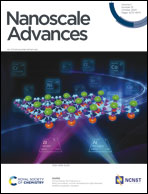Bionic smart recycled paper endowed with amphiphobic, photochromic, and UV rewritable properties†
Abstract
The single-use of large volumes of paper has become a serious issue which is depleting our resources and damaging the environment. It is of great significance and challenging to adopt simple, reasonable and practical methods to prepare functional recyclable paper. In this article, inspired by pleochromatic creatures and plant leaves' special wettability, a series of photochromic amphiphobic recycled paper (PARi) products was successfully prepared by adding gourd-like modified tungsten trioxide (MTT) to waste paper pulp. The results show that PAR2–7 has excellent lyophobic performance and amazing photochromic properties. It is worth noting that PAR7 has an impressive amphiphobic behavior, and its surface water contact angle (WCA) and oil contact angle (OCA) are 146 ± 1° and 137 ± 1°, respectively. It can withstand continuous ultraviolet light irradiation for 60 h, indicating excellent resistance to ultraviolet radiation. Most importantly, the reversible photochromic properties of PAR7 make it possible to write repeatedly on the surface by using ultraviolet light. In short, the performance of the prepared PAR is stable and superior, which can not only alleviate paper waste, but also means it has great potential in the fields of decoration, packaging, and banknote anti-counterfeiting technology.



 Please wait while we load your content...
Please wait while we load your content...